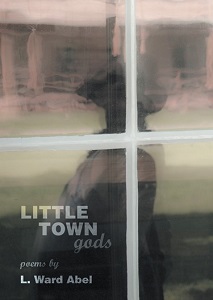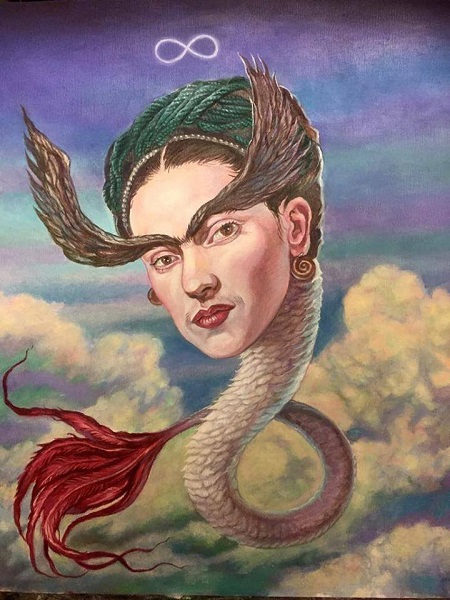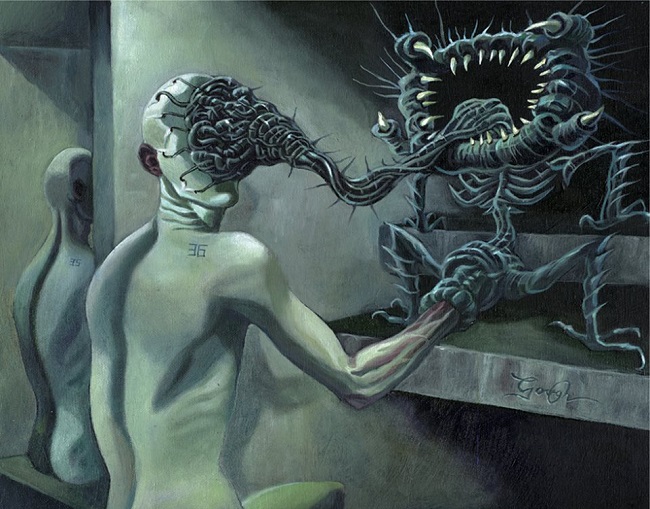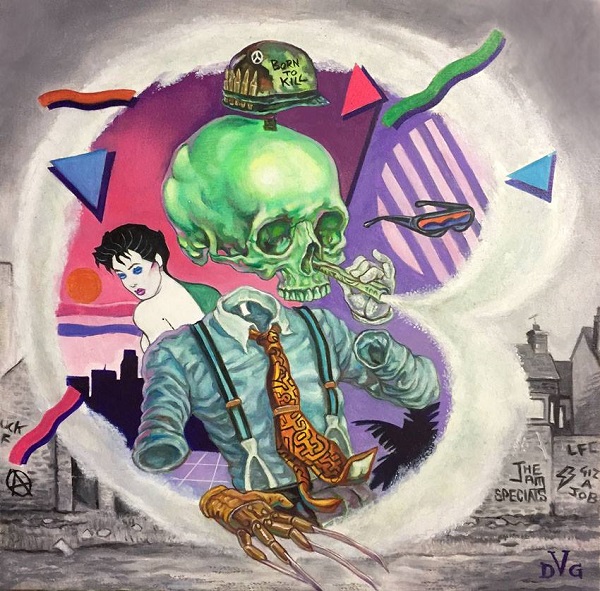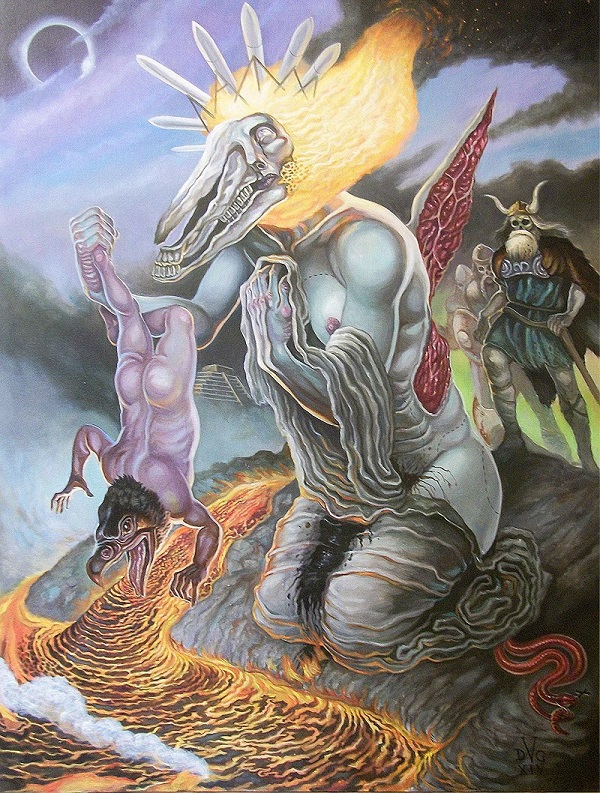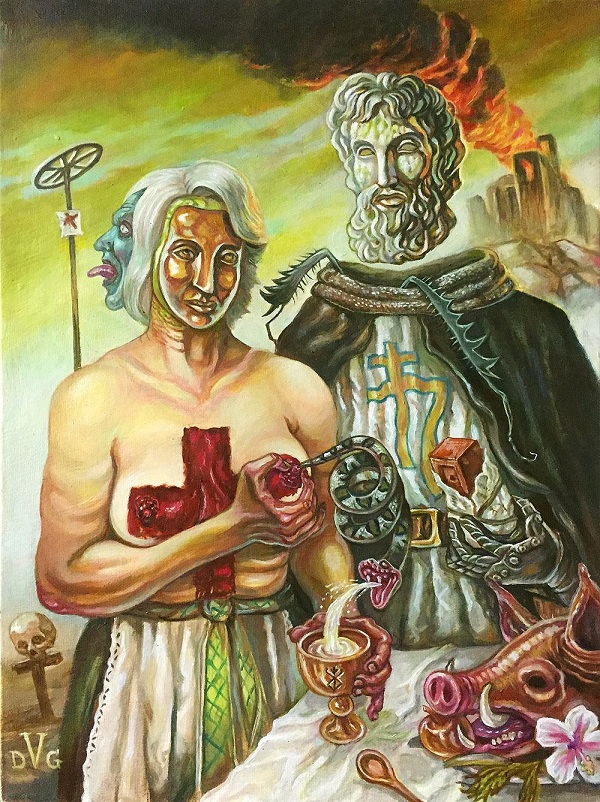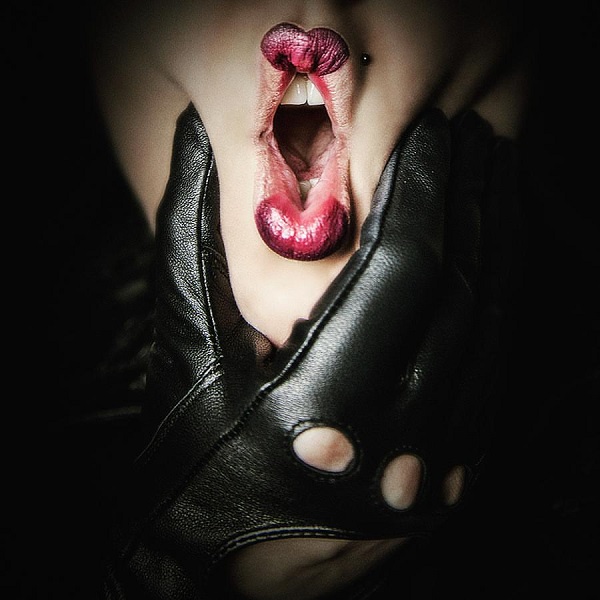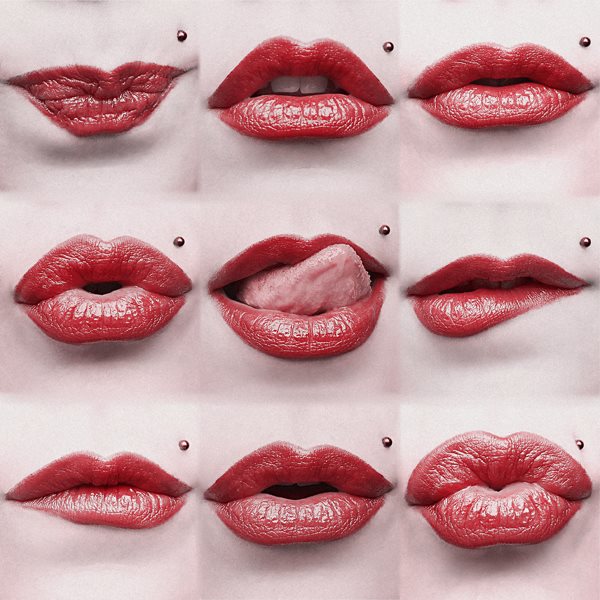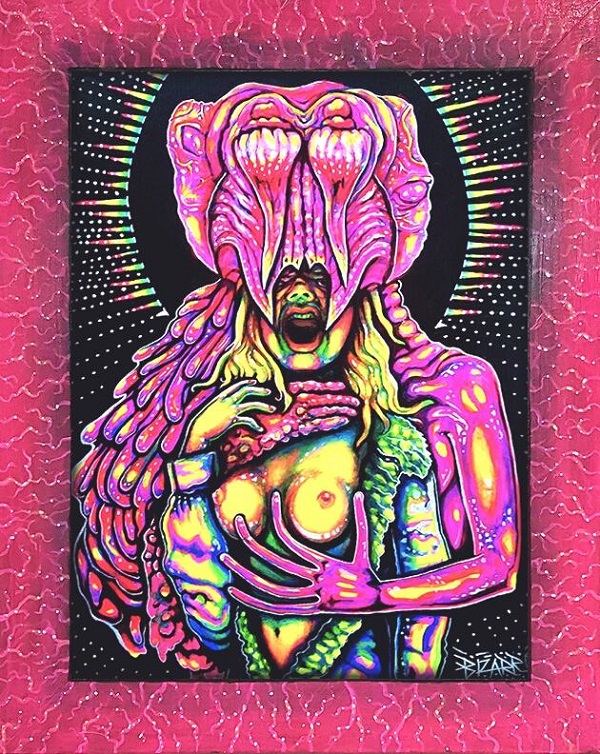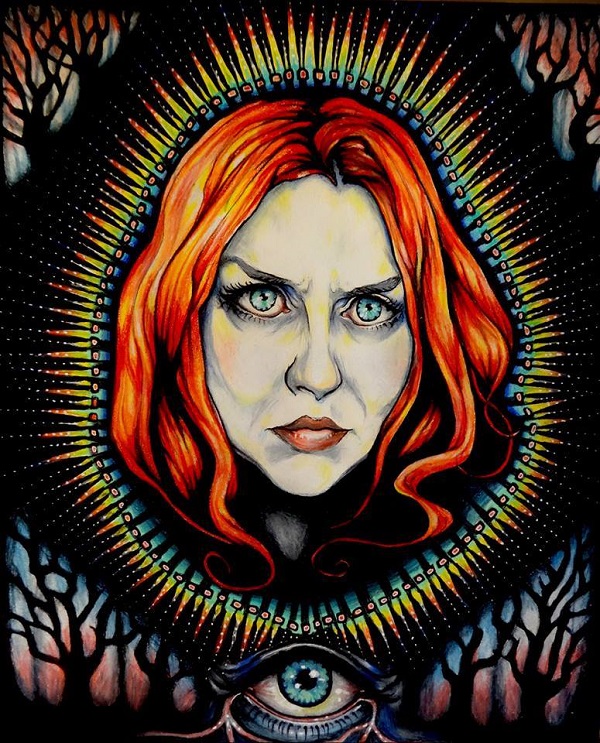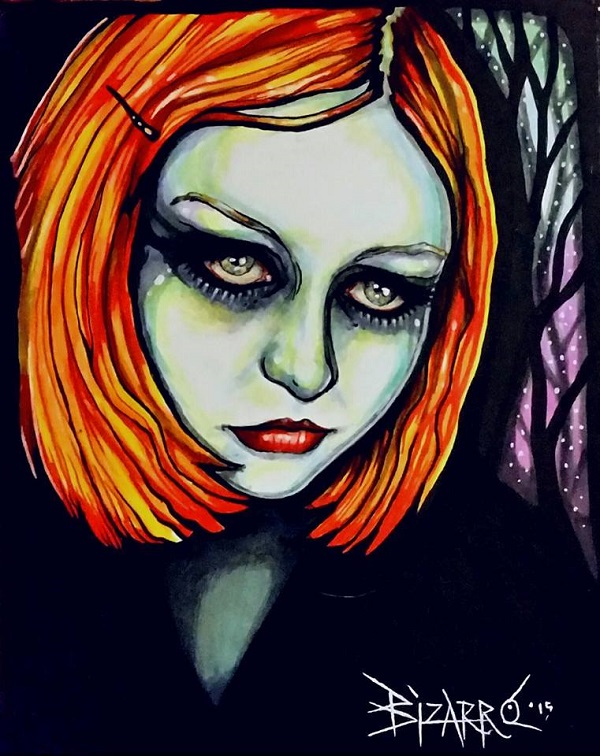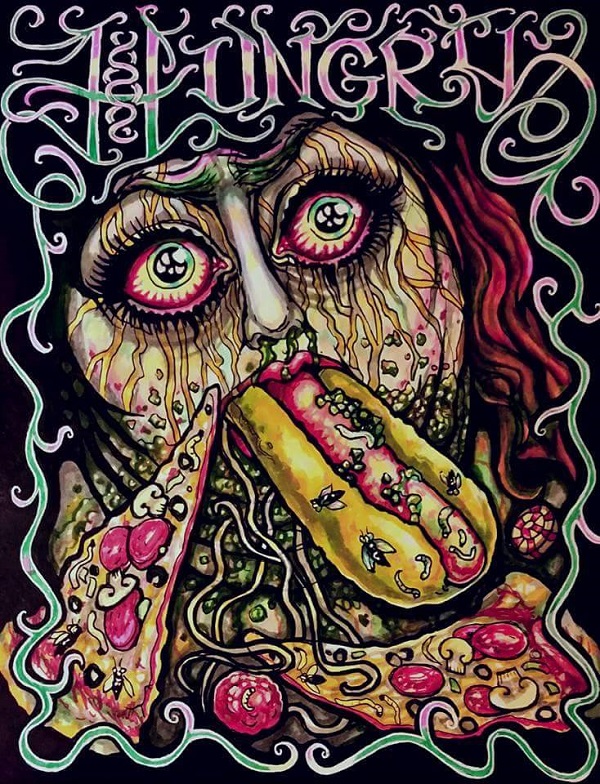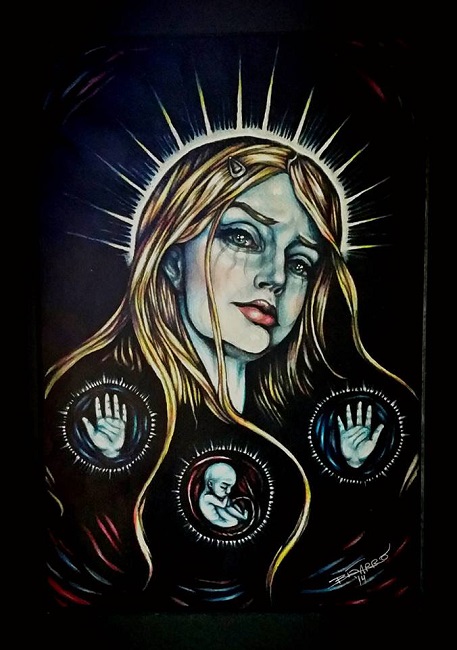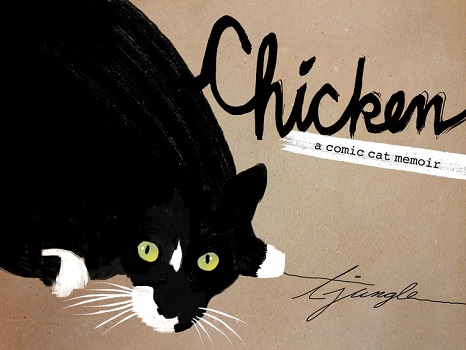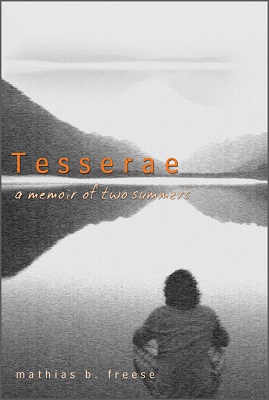
(Read the review of this book.)
Although John Updike called the Sixties a “slum of a decade,” each of us draws from the tree of life, savoring its juices idiosyncratically. For me 1968 and 1969 were memorable years in terms of pain, angst, high anxiety, acting out, being immature, growing, evolving, fucking up. It is very hard to consciously choose to grow up, much less be so aware that we can put it in those terms. It was my second childhood, having been infantilized by immature and undeveloped parents. I felt at the time that the period itself, those two magical and critical summers, served as a lactating cradle for me, and I suckled upon its teats. I am sure we all can remember when we acted as jackasses, and how we cringe when we reminisce about all that. At some point we must give up that judgment and just dwell in a deeper understanding of our behavior at that time and place. I was a child at 28 seeking, unconsciously, to be maternalized.
My sentimental haze for the Sixties, my nostalgia, is rooted in how the times let me down easily, allowed me to relearn primary lessons not provided earlier in my own childhood. I drank deeply at the well. Much like one’s first and indelible love affair, it is often seen through a romantic haze, always dramatically thrilling, always recalled tenderly, especially when it didn’t work out. I felt macerated at the time.
I believe I can say it in a sentence: Much of my life has been a search for someone to teach me. Can you identify within yourself such a need to want to learn for learning’s sake? I am still constructed in that way, except now I am both teacher and learner. I wish it had been otherwise.
I lived in Brighton Beach in Brooklyn in an era before the wave of Russian emigres came there and turned it into Little Odessa by the sea, before 1952, that is. It was a halcyon experience for me, for I knew the streets, lanes and courtyards about our rented basement apartment. I walked the neighborhood and I took early and deep drafts of the experience of being a young boy who is somewhat open to his observations and being. I recall a particularly lovely pussy willow tree in a courtyard which imprinted itself upon my memory forever. As I recall this, I must note that I actually took time to stare at the tree, to absorb it as best I could at that age. I take pride in that I was aware at some dark level that to see was part and parcel of awareness. I recall crawling under a house with my Irish chum, Farrell, a very exciting adventure at seven or eight. Joyce writes about the milieu and ambience of Dublin in his Dubliners, which I am reading now. It is the infatuation of childhood and early youth with place, sheer environment and the intimate and often subtle interconnections subliminally absorbed.
What is to be made of these “revelations?” I would often go to the local library across the way from the Tuxedo movie house on Oceanview Parkway just before the avenue turned to go into Coney Island with the cranky El above. It was here that in the summer a Mardi Gras strutted down the wide boulevard. Here I took down from the shelves Harold Lamb’s book on Robin Hood. I plunged into it, deeply, profoundly, as its narrative swirled about and within me. Not one of the movies about Robin Hood contains what I am about to relate. Later in the book Robin Hood is wounded and bled, which is a terrible mistake. Weakening, sensing his death upon him, he asks Little John to get his bow and give it to him. Lying next to a window, Lamb describes how this once physically powerful man who once could string his bow in one move with one hand, with one strong flex of the bow, like Odysseus, barely lifted it now and feebly shot an arrow through the window. It landed next to an oak, and Robin instructs Marian and Little John to bury him there. I believe the book ends with the bow draped across his marker with an epitaph. The death of Robin Hood told affectingly and with no schmaltz moved me deeply. I was very touched by the romantic sensibility of it all. I associate to Don Quixote and his library of romances. Something seeped into me and shaped an inner sensibility. I did not have that experience until the late Sixties when I allowed myself to be transformed. Oh yes, the cliché of the transformative experience – but it was.
Reading that book was like having my feelings kneaded by the powerful arms of a baker. I was touched, moved, sunk in regret and sadness, sorrowed, very sorry for Robin, hurt deeply by the reading of his death. The power of his epitaph, the bow and his last words gnawed at me in glorious Technicolor. So, as I look back, I see the Sixties as touching upon this early imprint at eight or nine, revivifying its capacity to let in, absorb, surrender, give in to, engage and be. It was an amalgam of a childhood revisited, of the conscious and feeling substrates within us all that carry a magical perfume that no manner of disparagement can damage.
Later in life, whenever I took that three-hour drive upstate and arrived in Woodstock, I’d go into a bakery that had loaves of bread of different kinds in the store window and buy a rich, luscious, thick slice of dark pumpernickel bread chock full of raisins and ask for a shmear and a cup of coffee dark, with two scoops of sugar, and I would park my carcass on a stone bench at the Village Green and watch the human flora and fauna pass me by. Before I drove back I’d buy a trinket for my daughter Brett. I see all this as an attempt to recapture the past, the rich past I had experienced in this upstate country town with no real defining real estate characteristics except for the people who inhabited it. (I could not let go.) I am deeply romantic.
During the summer of 1968, a year after the Summer of Love, Iris voluptuously came off the bus, and she appeared frazzled. The bus stop was in the middle of the town, next to the Village Green, and I was sitting there with my friend Hal, he was in his mid-forties, observing all the passersby and those coming off the bus. Iris was dressed in a summery white suit and she was in her forties, and very well-built, zaftig is the better word. Later did I learn from her, during a pseudo-date, that she was an editor. I believe it was Hal who initially went over to her and discovered that she was, in essence, looking to see “where all the action was.” In short, she felt she was missing something, as many people of her age felt. Honestly, they were missing something!
Hal introduced me to her with the idea I suppose that we might get together. He always had his devious sexual purposes. I had silly qualms about the age difference, which was perhaps 14 years or so, and he tried to disabuse me of that rigid thinking by sharing with me that women of that age did not have to worry about getting pregnant and that I didn’t have to worry either. In other words, for him, she was prime meat. (Hal was overly libidinous.) I set up a date with her at her home in Greenwich Village and was introduced to her hulking son who appeared to be in his twenties, a discomforting detail. I was neither aggressive nor assertive with her nor did we go to bed together. It became one of those casual Sixties experiences. It was a lost opportunity because of my immaturity. By 1970 I had married Rochelle, and it was the last time I heard from Iris over the phone, a call that I rushed, being newly married, awkward and trying to disassociate myself from her. Iris never called back. What did I know of savoir faire?
In 1968 I had stepped into “where the action was” by pure chance, a newly coined cliché of the time. It was a year before the Woodstock festival. Among many others coming off the bus, I intuited their anxiety as if they were left out of something larger than themselves. And here I was, a lucky and serendipitous self, sitting across the bus depot watching the stragglers from the urban jungle in search of a clean and well-lighted place. And with a slight smugness and a cat’s bewhiskered grin, I felt sated. I, too, had experienced that particular anxiety.
In Woodstock time was an evolving movement for me, more of a metamorphosis than incremental. Everything I am writing now and will continue to write until I end this memoir bespeaks durational time, the dwelling within the moment, like Bedouins setting out with goats, wives, children, carpets and rolled-up tents, and camels, to reach another oasis in time, without rush, asynchronous.
This kind of time was shown me in several places and in several ways. The best example was at the Pink Elephant, a restaurant a little way out of town and generally the place to go for a hamburger. It had its handmade sign posted outside, above the doorway, and the wood was painted that bluish-gray that you see in the sea towns of Massachusetts. Years later, after 1969, when the turmoil had abated it was turned into a jeans-and-T-shirt store and it went through other incarnations after that. At the time it was preciously new and quickly becoming a hangout. Almost 50 years have passed and it probably is completely gone. It did not grab my heart, but I remember it much like we know where our local movie theater was in the Fifties. I visualize it now as the movie house in The Last Picture Show.
As usual I was alone, and Marlene, the married woman with whom I was having a crazed, fervid affair, was spending the summer of 1968 in an uncomfortable truce with her unaware husband downstate on the Island. We would resume the affair in the fall. I was mournful, hurting, depressed and lonely. After such an intense attachment, it was miserable for me to separate. I asked the waitress if I could have a hamburger and coffee and began to look about at all the young faces, sniff the scent of youth in heat and lust, full of desire and craving experiences. I waited for about 25 minutes, waiting as an urban man carrying city time within him. I became impatient. I called the waitress over and may very well have had annoyance in my tone when I asked, “Where’s the burger?” I was impatient then; I am impatient now. The only difference is that, thanks to the passage of time, I am now aware of this trait. Slightly looming over me and with languorous indifference, looking like the slatternly Patricia Neal in Hud, I recall the waitress say “Cookin’.” I didn’t realize at the time because I was into all fuss and feathers about my meal that she had shared an essential axiom about Woodstock time and life. If I wanted to adjust to all this, I would have to experience what is durational as opposed to chronological time. It was a significant learning, one which I have with me now, as we are all expedited and rushed into the future, not realizing Faulkner’s comment that the past is the present and vice versa.
Whenever I think of the waitress’ reply I feel the Earth Mother wisdom in that: the beauty of delay, for delay has much that is beautiful to it. It is embedded in the fullness of time. Often, in practice as a therapist, when a client was buffeted by choices and overwhelmed by competing priorities, I would suggest that another choice would be to delay. How could you beat that one? I had learned that in Woodstock.
With learning how not to use time nor to saddle it but to walk alongside it, I experienced an inward feeling, newly created, so that for a few minutes during the day I felt that I was going to sweetly burst – or molt. These were private moments alone in which I felt I was swelling from within in a very pleasant way which defies description. It was more of a profound nature than a sappy happiness.
It was a time in which, I believe, I was evolving, unknown to myself, more of a slow-awakening or a metamorphosis than an incremental experience. I felt at the time, when I had dim cognizance of who I was, that I might sweetly fracture from a transforming elation. I felt. I could not explain it. It was happenchance. After all, I had only rented my body for much of my life. Once I experienced a quasi-Joycean epiphany of a kind out in a pasture with a young man and his 18-year-old girlfriend, Mary, who I was beginning to be attracted to, not knowing until sometime later that she had prepared herself to leave him and turn her attention towards me. She was 18 and nubile, and I was 28. Her boyfriend at the time was playing his guitar as she was luxuriously draped over a stone outcropping, and at the apex of this triangle I sat feeling at one with everything. I felt peaceful. Congruent is the better word.
The bucolic and pastoral setting stirred within me an ineffable moment – and no more than that – of feeling at one with my disparate selves. I had been living a schizoid experience for the last five years or so. It is the condition of being in America: divided and divided once more – and once more to make sure. Most assuredly it was the consequence of a malignant benign neglect of poor parenting.
Woodstock can’t be reclaimed from memory. Memory can only afford a map of the place, a chain of personal, bittersweet and tender associations. Woodstock is a feeling in me. I recall in the crazed state I was in an expression of freedom, however minute, that had never been mine. I reveled in the drinking in of what was all about me, for I was much the observer and knew enough to keep my mouth shut when events were new or anxiety-provoking. I recall well the styles of the time: the beaded, intricate handmade necklaces and bracelets that both men and women wore, the extended pork chop sideburns, the flared bell-bottom pants and, on very rare occasions, Nehru jackets which were fast becoming dated. Hair was very long and in ponytails for some, or a kind of short bun for others, and celebrated in the musical Hair, which summed up the Zeitgeist of the period; women let hair grow on their legs and underarms, often cleansed with soap and water rather than deodorized. Middle-aged married women in Woodstock were “infected,” for the laissez-faire atmosphere and attitudes of younger women gave them dispensation to have affairs and ultimately unload their spouses. The middle-aged male spouses from downstate often went into a reel and wandered, like brain-dead wooly mammoths, into the local woods. [The best film on that is A Walk on the Moon.]I didn’t think that the marriages were moribund. In most cases, one spouse had not learned how to live while the other spouse was in bloom.
You have to imagine Woodstock: for a moment it was a temporary Shangri-La in upstate New York, across the way from the historic town of Kingston. Essentially something was happening and changing, and it riotously infected all those open to the “disease.” Freedom and open expression always are infectious. It was a time in which I remade myself. It was a time of remaking. I have never experienced it again in this culture since. Woodstock was the French Revolution, the first free efflorescence before it turned dark. It was a Romantic period.
The songs of the Beatles saturated the culture and were the symphonic score of the time. Inherent in the lyrics and jaunty music (“Maxwell’s Silver Hammer”) was the esprit de corps of the young and the young-minded. Driving up the New York Thruway, crossing over the Tappan Zee Bridge, with my convertible top down on my 1964 Mustang (Woodstock on wheels, lucky me!), I often would hear the Beatles’ Bolero, the six-minute “Hey Jude,” on the radio. DJs often took a whiz during the song, for it was the longest song in recent vintage. That song became my musical tapeworm, difficult to get rid of, like a stubborn case of athlete’s foot. We all recall Dustin Hoffman as Ben in The Graduate, speeding over highways in his convertible (the wonderfully sporty1966 Alfa Romeo Spider 1600 Duetto) to get to his girl, the sophisticated and syncopated melody of “Mrs. Robinson” as accompaniment. So it was for me.
The summers of ’68 and ’69 created memorable songs that were the latent underside of my life. As they blared over the radio or played on my old phonograph, memories of my delayed affair, as well as the depressive state of mind I was in, made them connect to the states of my mind, and they have remained. At the time I would tear up, wallow in my sorrow, feeling sorry for myself, missing Marlene. I remember these tenderly now: “Crystal Blue Persuasion” by Tommy James and the Shondells, “People Got to Be Free” by The Rascals, “One” by Three Dog Night, “In the Years 2525” by Zager and Evans, “Spinning Wheel” by Blood, Sweat and Tears, “My Cherie Amour” by Stevie Wonder, “Good Morning Starshine” by Oliver, “Sweet Caroline” by Neil Diamond, “Put a Little Love in Your Heart” by Jackie DeShannon, “These Eyes” by The Guess Who, “More Today Than Yesterday” by The Spiral Staircase, “Up Up and Away and Aquarius” by The Fifth Dimension, “This Guy” by Herb Alpert, “Both Sides Now” by Judy Collins, every song on Wildflowers, “Lay Lady Lay” by Bob Dylan, “One is the Loneliest Number” by Three Dog Night, “Mrs. Robinson” by Simon and Garfunkel, “The Look of Love” by Sergio Mendes & Brasil ’61, “Sunshine of Your Love, Cream” by B.J. Thomas, “Everyday With You Girl” by The Classics IV, “Sugar, Sugar” by The Archies. You can choose to gag on these songs with unending nostalgia, but at the time they were something quite new to experience. I venture to say that the songs in these two years were the most memorable of the 20th century, much as 1939 has been considered the greatest year in cinematic history.
I was marinated in all that, polyurethaned so many times with this music that I glowed in the dark like good oak. For me, a product – and I mean product – of the repressed Fifties, the expectorate of the Eisenhower years, it was the clearest expression of how events of the times can change an individual’s life. I began to question authority. Indeed, it was a bumper sticker on my car, and I became subversive, a trait which had lain quiescently in me for years. I was becoming self-aware while I was very unaware of myself. (Krishnamurti described this state as the “awakening of intelligence.”) If you’ve experienced psychotherapy, very much the same process occurs. At the time I was in the soup of treatment, dog-paddling to stay afloat, no attainable shore in sight. And the siren song of change was all about me; it was the music of my sphere.
I can’t express exactly what was occurring to me internally, for it is unknown to me even now, so many decades later. I am left with nostalgic and sentimental rules of thumb I acquired, and they have been much revised. It is in the telling of it that I catch now and then, here and there, like shagging a fly, a glimpse of what I was experiencing and what I was feeling then. Feeling is the critical word. I need to be felt, always have, still do, and I don’t mind because I am very aware of it. It is under mild control, and it is definitely not “being needy.” In the shabbiest cliché of clichés, the Sixties were about feelings, at least to me, a repressed and inhibited young man in his late twenties who had not lived his life nor had experienced his body or inhabited his own soul. Without knowing or understanding I was giving up my visceral body to Woodstock. Change begins in the body more than in the mind. When we learn to dance it is often hard because we are into steps rather than flow — when you danced in the Sixties you were successful if you surrendered your body. In all the old TV newsreels of Hippies cavorting in fields, not a deliberate step is visible, everything within bodily movements. My generation was stiff: “1, 2 3, cha, cha, cha” to the driving propulsion of Ray Peterson’s “Patricia.” I was learning to be expressive.
Sexually frustrated, unconsciously in search of an interim relationship to substitute for Marlene, and wanting to be cared for, perhaps mothered, and to care about – and needy, I stumbled about in Woodstock for two summers, often staying at my friend Hal’s house which he had purchased with another couple, the wife of which he had an affair with. I was caught in this imbroglio and naïve about what was swirling about me, and Naomi, my main squeeze at the time, became a victim of that. I stayed there on weekends or longer during the summer and became, in effect, a moocher. I didn’t see what was before my eyes – but why should I have? I had been blind since I’d learned to walk. I was a very unsettled human being, frenetic and frantic, uncomfortable with myself. I was lost, an ill-defined man-child. I lived within a cloud of unknowing. To be gracious toward myself, I can say that I was finding out or discovering other ways to be.
Images of people I met in Woodstock return. They are often more compelling than what words can describe; the word is not the thing itself. I recall driving the ragged and winding back roads of town, the ragtop down, humming and not making music on a harmonica I had purchased. As I look back, I see that it was to soothe my body and lower the stress I produced like sweat. The sun came through the trees so fiercely that the long hood of the golden brown Mustang was dappled like an Indian paint. I’d strolled by the head shops with their paraphernalia, bong pipes, inlaid trinkets of Mexican stone (jasper, hematite, jade), Picasso stone, turquoise, onyx and agate, saturated in potpourri, comely vanilla, jasmine and such. These things didn’t appeal to me, for I still had that anti-drug attitude, and I also didn’t smoke, so the appeal of the counter-culture lay in its art and in communion between souls and that I absorbed whenever I could. After all, high grades in art and music classes got me into Queens College. Turn it around and I see my need for control, which has been a lifelong issue, kept me from experimenting with the drug culture.
At that time an artistic fad making the rounds in Woodstock was to make light boxes, colored lights that glowed and flashed randomly behind Plexiglas. Once I sat in on an auction with Hal at a local gallery, which offered an artist with his putty knife affixing layers and gobs of acrylic in varying strokes and swathes across a canvas. At the end he put the piece up for auction and Hal purchased it. What I was enjoying and slightly marveling at was the extemporaneous work of an artist at play. I found that much to my liking. I was becoming open to all this without judgment or opinion.
The village back then was an enhanced urban Disneyland still trying to keep its Sleepy Hollow status: the Pink Elephant restaurant, the mild-mannered bridge that arched ever so slightly over a garbage-tainted and scurvy Catskill stream, Tannery Brook, Tinker Street, the local haunts, the T-shirt shop operated by a gay guy and his buxom woman friend. I remember an unseen and unnamed band that played rock in the backrooms of a house that fronted the main street and whose music wafted for some distance. Of all the denizens of town, one young man stood out. Perhaps in his late twenties, he wore an all-black outfit and a flat Mexican hat with a short cape, no less (“Si, Cisco”). While holding his dog on a leash, like Bogie and Bacall going for a walk, he passed by and we never spoke to one another. I also remember that 10 years later on the same street I saw this man once more. Everything had changed. I had changed. But he was still in his black Zorro attire and walking his dog. He had chosen to fossilize. I was evolving, and I had moved on.
Woodstock was a country town which constantly reinvented itself. I don’t think the locals ever made their peace with it or the recent influx of hippies and urban seekers, although it had a century or more of artists coming there. In my wanderings about town I came across an artist in his fifties or sixties who had a charming home outside of town. His name was Arthur Zaidenburg, and he made a living creating a series of instructional art manuals to teach drawing to young people. His Anyone Can Draw is a classic art-instruction book. I also discovered in a leisurely summer talk with him and his wife that he also painted murals on the cruise ship Rotterdam, murals for the St. Moritz in Manhattan, and 100 motels in Miami Beach.
What was happening to me was that I was engaging interesting people for the first time in my life, people outside the limited scope of my experience. And I remember most of all a lovely floor-to-ceiling stone fireplace that another artist friend of Arthur’s had constructed in his home. Apparently it was a swap between them. I don’t know what the other artist received. It was this artistic, sharing attitude in which a kinship existed between the two men that I took in and cherished. “An artist is never poor,” writes Izak Dinesen in Babbette’s Feast. The concept that this artist employed was new to me: to surround yourself with all kinds of artifacts that reflect your interests, your loves, what tickles your fancy, so that your home is your nest. I do that all the time in my present world. A recent find at a consignment shop was a small bronze art nouveau frame from one of my favorite style periods. I spent time exploring the countryside, a patent symptom of my restlessness as I look back now. I met Edgar Pangborn, author of the cult fantasy classic Davy. At that time he was in recovery from a heart attack, and he had moved all his filing cabinets downstairs into the living room because he could not navigate the staircase. My talks with him, as I look back, were superficial because I was superficial. His niece, Mary, and I almost had a fling but I fucked that up as well. Pangborn died in 1976, and Zaidenburg lived to 88, having left Woodstock after 30 years to join an artist community in Taos, New Mexico.
Summers ’68 and ’69 were a tumultuous time for me. In the state of mind I was experiencing, what little inner-directedness I had was minimal. I was still mostly an external man, a living decal imitating a mature man. It is distressing – and horrifying – to realize how much I was a child. What had happened to my rearing to produce such a child? I had little or no rearing. I can be safely horrified now; at the time I had not enough insight to be self-horrified. So much hard-earned learning lay ahead. I had tasted of misery but nothing compared to the future death of a daughter by suicide and the death of a wife in a car accident that happened decades later. Whatever bile I secreted, it was infused with discontent and a vast feeling of being unknown to my very self. Oh, the years we “live” unwittingly and unknowingly of our own very selves. Discontent and depression consumed me.
I lived on Ash Avenue in decrepitly dull Flushing, and the aged superintendent could not properly attend to the building. I had separated from my wife and she returned home to her mother’s house with our daughter, Caryn. It was here that I had a surprise visit from Hal. Within a short amount of time, his motive became clear: “I am wondering if I could use your apartment one afternoon.” Dense as I was, I didn’t realize he wanted to fuck his latest conquest. Of course, I knew his wife, Estelle, and his two sons, for I had often stayed at their country house. In short, he was asking me to pimp out my home. The quiet between us was stifling, for I really didn’t know how to respond. I knew I surely didn’t like the idea of someone fuckin’ on my bed. I also knew that during WW II Hal had given his wife syphilis after one of his flings, all shared with a hearty “ha ha.” I should have severed our relationship at that moment. I didn’t have, upon reflection, the balls to do so.
Hal finally sensed my internal conflict and said a few words about my being uncomfortable with his request. I decided later that it was not something to ask a friend, and we left it at that. Indeed, in the years ahead I began to sense more and more conditions being laid down to remain his friend. As long as I knew him he cheated on Estelle, who was much the enabler, and she would eventually become suspicious and confront him. He could not change. As I look back I see the dependency in our friendship, which was skewed: father me, teach me, show me the way, instruct me in the ways of the world. I never had a father, I had a sham body pretending to be my father, and Hal served as a surrogate, a tainted one at that, until I learned better and began to self-parent myself. (To self-parent one’s self is to wear second-hand clothing.)
At the time I was frozen. I couldn’t say what I was feeling so I would fall back into silence which is always ineffective. The other person had to decipher my code and make assumptions, if so inclined. This is child-like thinking. To access me you had to be a mind reader. Who wants that as part of a friendship or relationship? As I look back at Hal’s chutzpah and imposition upon me, I feel creeped out, and his apparently negative assessment of me encouraged him to make such a request.
As I merged into the late Sixties, this inability to know what I was feeling and then to articulate it to my satisfaction, had “improved.” I can say unequivocally that I did not come to awareness as a human being until the age of 32, when my psychological and emotional selves were as tightly fixed as subway bulbs in their sockets.
(Read the review of this book.)

